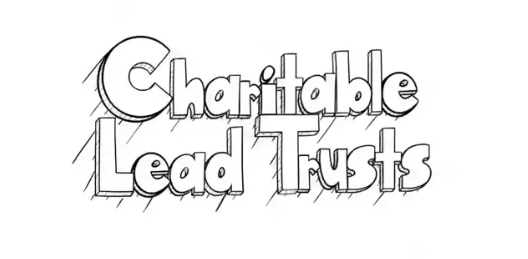Charitable Lead Trusts
Sep 25, 2024

Are you concerned about the inheritance taxes your heirs may have to pay? Then you may want to consider creating charitable lead trusts.
A charitable lead trust is the inverse of a charitable remainder trust. While a CRT is structured to provide income to the trust beneficiaries and an eventual charitable donation, a CLT provides a charitable gift at its implementation plus the possibility of eventual income to your heirs.
Charitable Lead Trusts may provide an estate tax solution for a highly appreciated asset. As a hypothetical example, a multi-millionaire named Scott owns $1 million of greatly appreciated blue-chip stock. He wants to reduce the value of his taxable estate; he does not want to burden his heirs with death taxes. He would also like to make a major gift to a local charity. So Scott collaborates with an estate planning attorney to draw up and implement a CLT.
By gifting the highly appreciated stock to the charity using a CLT with a term of 20 years, Scott creates an income stream for the charity with significant tax benefits as a byproduct. Income payments to the charity will be made in 20 yearly installments of $50,000 from the trust principal. After either 20 years or Scott’s death, his heirs will receive the interest off of the initial CLT principal (i.e., the appreciation on those shares across 20 years) while the actual shares will go to the charity.
In donating the stock through the Charitable Lead Trust, Scott is eligible to take an upfront income tax deduction for the full value of the charitable donation. He receives a gift and estate tax break equivalent to what would happen if he simply wrote a $1 million check to the charity, while also offering a potential financial benefit to his heirs.
All Charitable Lead Trusts are irrevocable, and there are different varieties of them. Here is a brief breakdown of their variations, and their characteristics.
*CLTs can be created either before one’s death or at one’s death. In an inter vivos CLT, the grantor (i.e., donor) relinquishes ownership of the asset(s) to the trust while alive. Asset(s) transfer into a testamentary CLT only upon the death of the grantor. An executor to a testamentary CLT can fund that CLT with assets equaling any inheritance taxes owed.
*Some CLTs are structured to allow further asset contributions during the trust term. Other CLTs are designed so that no further contributions to the trust are permitted once the trust is active.
*Most CLTs are non-grantor trusts. These CLTs are expressly designed to benefit a charity and the donor’s heirs. In a non-grantor CLT (such as the above example), the donor gives away the asset(s) to charity; heirs receive only the interest on the principal at the end of the trust term. You can see the potential downside: if the asset depreciates over the trust term, the heirs receive nothing. In a non-grantor CLT, the donor is able to take an annual income tax deduction on the value of the income that heads to the charity discounted at the federal funds rate.
*Other Charitable Lead Trusts are grantor trusts. These CLTs are primarily designed to benefit a charity and the donor. The charity receives income off the trust principal for X years, but the donor will regain ownership of the appreciated asset(s) when the trust term expires. The donor gets to claim an upfront income tax deduction for the gift. In this variation, the donor pays taxes on the income the CLT generates, so it is wise to put tax-exempt investments into a grantor CLT.
An IRS formula figures the future value of the donor’s gift. The variables here include the annual income the charity will receive, the duration of the CLT and the projected ROI for the trust asset(s). The IRS determines the ROI using an interest rate (the “hurdle” rate) based on Treasury yields. Non-charitable beneficiaries of the CLT are projected to receive the value of the trust assets at the end of the trust term minus the value of the initial gift. This amount will be exposed to estate taxes, but in many cases it will be far less than the generous estate tax exemption.
CLTs allow you to pursue three estate planning objectives. If you want to make a sizable charitable gift, help your heirs and reduce taxes, you may want to explore creating one. If you need help setting one up, reach out to a dedicated financial professional at Epic Capital today.
For more insights and resources, be sure to sign up for our Weekly Market Commentary. Follow our YouTube channel where we regularly post our Epic Market Minute videos. Follow us on LinkedIn, or like us on Facebook. And as always, please don’t hesitate to reach out to a dedicated service professional at Epic Capital.
Tags: Estate Planning, Family Wealth, Financial Planning, Legacy, Wealth Building
More Insights
You’re beginning to accumulate substantial wealth, but you worry about protecting it from future potential creditors. Whether your concern is for your personal assets or your business, various tools exist to keep your property safe from tax collectors, accident victims, health-care providers, credit card issuers, business creditors, and creditors of others. To insulate your property … Continue reading “Estate Planning – Protecting Your Assets”
You know how important it is to plan for your retirement, but where do you begin? One of your first steps should be to estimate how much income you’ll need to fund your retirement. That’s not as easy as it sounds, because retirement planning is not an exact science. Your specific needs depend on your … Continue reading “Estimating Your Retirement Income Needs”
As June begins, markets continue to navigate a complex landscape shaped by trade policy shifts, an uncertain economic and earnings outlook, and bond market headwinds. Several key developments in recent weeks may have implications for markets:
April showers came a month early as stocks fell in March. Tariffs were the primary cause of the market jitters, although that uncertainty became too much for markets to shrug off once economic data started to weaken.
A successful investor maximizes gain and minimizes loss. Though there can be no guarantee that any investment strategy will be successful and all investing involves risk, including the possible loss of principal, here are six basic principles that may help you invest more successfully.
Services
Epic Capital provides the following comprehensive financial planning and investment management services: Learn More >


 Top of Page
Top of Page











